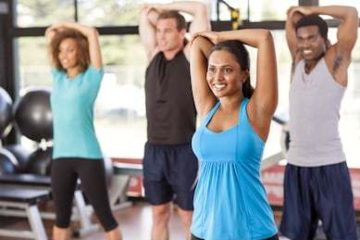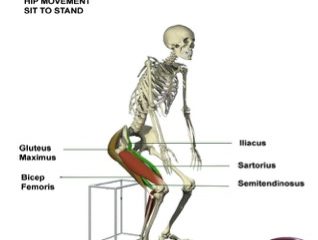This article appeared on cnn.com .
How to Get Better Posture at Any Age: These moves can help you stand (and sit) straighter—and improve your health.
W hy is good posture important as we age? It’s not about vanity; proper posture can bolster your health and boost your quality of life.
You don’t need to stand or sit straight as a board. Good posture just means your vertebrae are aligned, you’re not bent or twisted, and your muscles and ligaments aren’t straining. It’s something everyone can work on, and improvement brings significant rewards.
“Good posture enables us to breathe better and function better,” “Slouching prevents your diaphragm from working efficiently to expand your chest cavity and lungs. And it can affect your breathing capacity even if you don’t have a respiratory condition.”
Over time, the reduced lung capacity caused by slouching can make you tire more easily and even leave you short of breath, says DeChello.
That can transform basic activities, such as climbing stairs, into exhausting endeavors. There’s a more immediate risk, too: Poor posture can change your center of gravity and make you more prone to falls.
But proper alignment can be especially challenging for people with certain conditions. Stenosis, a condition in which the spaces between the vertebrae narrow, can make it painful to straighten the spine.
And hyperkyphosis—an excessive curving of the upper back that can resemble a hunchback—becomes more common with age, affecting 20 to 40 percent of older adults. Normal changes that come with aging also cause certain muscles to weaken, tighten, and lose flexibility.
The tendency to lean forward as we age is natural, but strengthening your core muscles and keeping the muscles in your torso pliable can help support your spine and promote good posture and better health.
Posture training and physical therapy can also improve curvature, straighten the spine slightly, and make people with hyperkyphosis feel better about their appearance. (Corrective surgery comes with a high rate of complications and should generally be a last resort.)
Just remember that developing good posture takes time and patience.
“One thing everyone thinks is, ‘I need to sit up straight,’ but your body might not be strong enough,” says DeChello. If trying to sit up straight fatigues you, use objects such as a chair to support you while you work on strengthening your muscles, she says.
Certain exercises can help you improve posture and relieve associated pain (see below). Just be sure to consult a doctor first if you’re unsure whether these moves are safe for you.
3 Exercises to Align Your Spine
how to get better posture at any ageDone regularly, these exercises are excellent for building the type of core strength that stabilizes the body, says Kevin Weaver, D.P.T., a clinical assistant professor of physical therapy at New York University. But quality is more important than quantity, so be sure you don’t overexert yourself.

- Stand tall on a wall.
Back up against a wall, pushing your whole spine and head into it as best you can, Weaver suggests. The goal is to minimize the space between you and the wall. Then tilt your pelvis, flattening your lower back straight against the wall.
“That’s the posture you want to walk with, sit with, do everything with,” he says.

- Try tummy time.
Lie on your stomach from time to time, Weaver says. “It’s a great way to stretch the spine.”
He suggests rolling a towel and placing it underneath your forehead so that you can breathe comfortably and reduce neck pain. If it has been a long time since you did this, ask someone to help you into and out of position.

- Feel the crunch.
Crunches can improve core strength, but if you have osteoporosis or have fractured any vertebrae, skip this one: Lie on your back, hands behind your head, and exhale as you move up toward a seated position. Stop when your shoulder blades lift from the floor. Repeat, resting in between sets.


